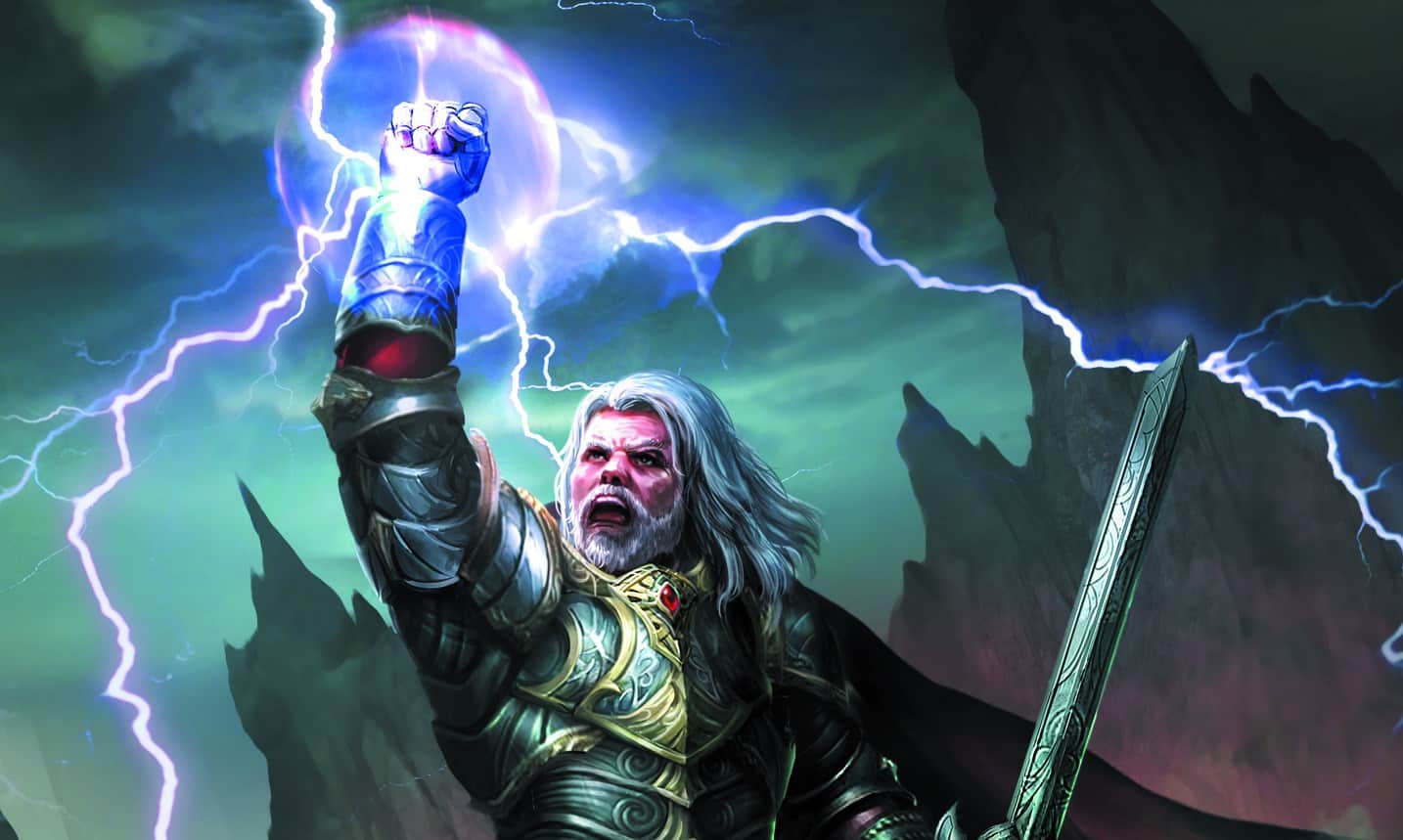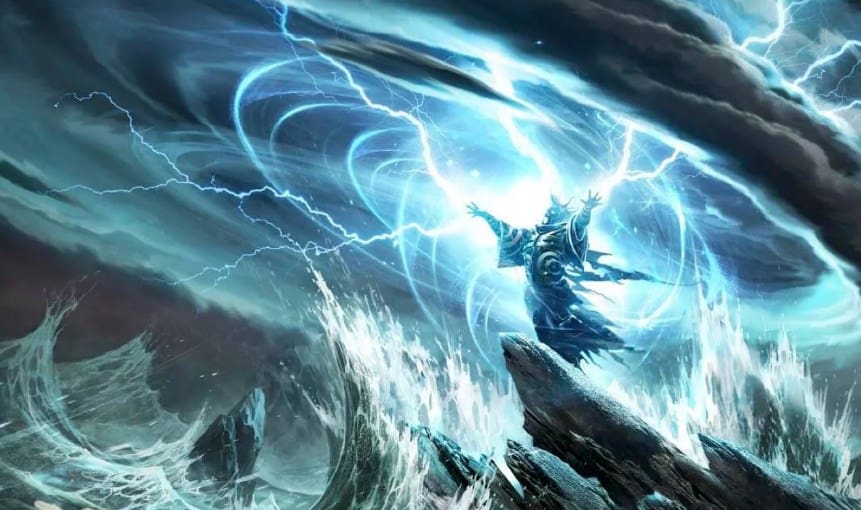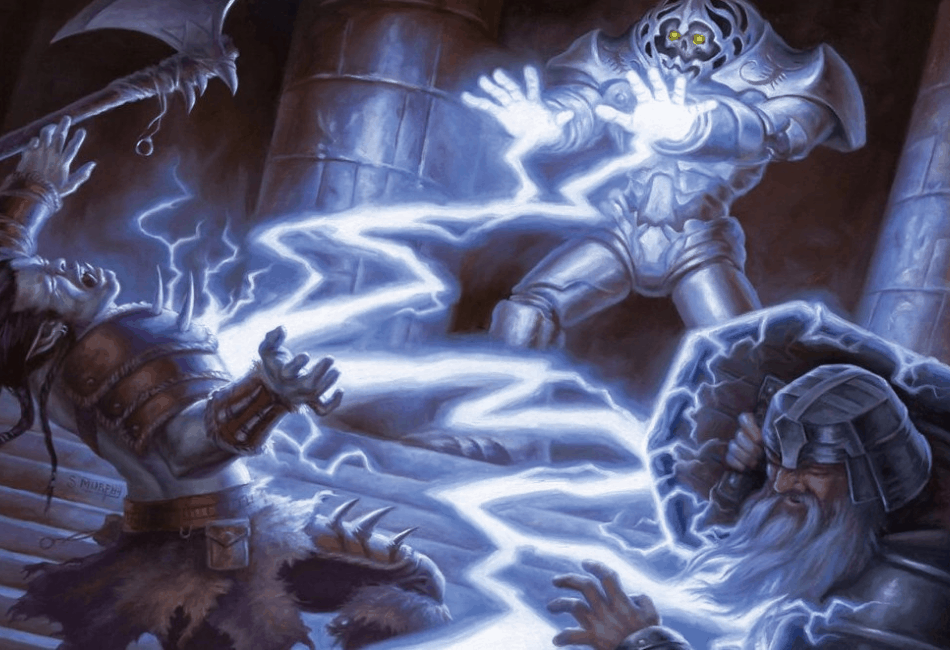Lightning is an extremely scary and deadly element to interact with. According to a study from 1989 to 2018, the United States has an average of 43 reported lightning fatalities per year. Although only about 10% of the people struck by lightning are killed and the rest are left with various degrees of disability, it is still devastating as no one has escaped unscathed from a lightning strike. As Uncle Iroh said in the “Bitter Work” episode in Book 2: Earth of the Avatar: The Last Airbender series, “some call lightning the cold-blooded fire. It is precise and deadly…”
That being said, you can unleash this devastating force of nature upon your enemies in the world of D&D! How terrifically horrifying is that? Of course, compared to the real world, D&D has all sorts of monsters with a build of a tank and are tough to deal with. Thus, dealing electrifying lightning damage to such opponents is suitable if not inadequate.
There are…some spells that allow you to call upon the power of lightning. Note the “some” terminology because they do not come by often. In fact, only 12 spells deal lightning damage in the Player’s Handbook alone, plus an extra 5 from Xanathar’s Guide to Everything and an extra 1 from Tasha’s Cauldron of Everything.
So, if you are planning on picking up a spell to deal some mind-shocking damage, you need to choose carefully. The most spells with lightning damage at a certain level would be level three spells with five of them, and if you want a powerful lightning spell covering a wide area of effect then what you are looking for is the Call Lightning spell. What is it, how does one use it, and how does it work? Read on further into our Call Lightning 5e guide to find out.
What is Call Lightning?

Call Lightning is a 3rd-level conjuration spell that can be found in the Player’s Handbook on page 220. Since it is a 3rd-level spell, you would need an available level three spell slot or higher to cast it. Casting it with a spell slot higher than level three will make the spell more powerful, but this will be discussed in later sections (refer to the “On higher levels” subsection in the “How does Call Lightning work?” section).
Conjuration spells are spells that summon all kinds of things such as creatures, materials, or energy towards the caster and vice versa. Well-known conjuration spells include Acid Splash, Mage Hand, Ice Knife, Wall of Thorns, and more.
It has a range of 120 ft. and a casting time of 1 action. This means that you can choose a visible point within 120 ft. of you as the starting point of your spell’s effects. Also, you can only cast this spell as an action, though you can read it as well to use as a reaction after your turn.
It has the vocal and somatic component requirements (this will be discussed in the “How to use Call Lightning” section). The spell’s effects can last for up to 10 minutes, but only if the caster has the concentration for it since Call Lightning is a concentration spell. For brevity, all of these are listed down below.
- Call Lightning
- 3rd-level conjuration
- Casting Time: 1 action
- Range: 120 feet
- Components: V, S
- Duration: Concentration, up to 10 minutes
Call Lightning concentration
Call Lightning requires concentration, which means that it needs the caster to focus on keeping the spell’s effect to last for the duration. When the caster loses concentration, the Call Lightning spell automatically ends. The caster can also end their concentration at any time without requiring an action to do so. There are many ways to lose concentration, and these are listed down below.
- Casting another spell that requires concentration (such as Pass without Trace) would end an existing one because you cannot concentrate on two spells at once. However, you can cast another spell while concentrating on one if the spell you are about to cast does not require concentration as well. For example, you are concentrating on the Call Lightning spell you cast on your previous turn and you wish to cast Chromatic Orb on your current turn. You can do so since Chromatic Orb does not require concentration.
- If you take damage while concentrating on a spell, you may lose that concentration. To determine if you lose concentration upon being damaged, you must make a Constitution saving throw to maintain it. The save must reach or surpass the required DC which is 10 or half the damage you took, whichever is higher. If the damage comes from multiple sources such as multiple strikes from different enemies, you must make a separate saving throw for each source of damage.
- If you are incapacitated or killed, you instantly lose concentration on a spell.
- The environment you are in may disrupt your concentration such as being in a loud and noisy place. This is entirely up to your DM. If so, you must succeed in a Constitution saving throw against a DC of 10 to maintain that concentration.
How to use Call Lightning

If you have decided that you want to cast Call Lightning to damage your enemies, you must be able to meet these requirements first:
- You must have this spell in your spell list. This is possible through many ways such as a class’ spellcasting feature, a race feature, a background feature, etc.
- The Call Lightning spell is a level three spell. Therefore, you must have an available level three spell slot or higher that you can use to cast the spell. Casting it with a higher-level spell slot makes the spell more powerful (again, refer to the “On higher levels” subsection in the “How does Call Lightning work?” section).
- You must be able to speak freely in an audible voice since the spell requires the vocal component. It means that to cast this spell, you need to utter incantations and this is not possible if your mouth is restricted from external, internal, magical, or other forces such as having your mouth tied up with a cloth or being under the influence of the Silence spell.
- You must be able to move your hands freely since the spell requires the somatic component. It means that to cast this spell, you need to make certain gestures and this is not possible if your hands are restricted from external, internal, magical, or other forces such as having rope or handcuffs tied on your wrists or being under the influence of the paralyzed condition.
- You must be able to concentrate on the spell since Call Lightning is a concentration spell.
- If you are in combat, you must cast this as an action on your turn.
When you have met these requirements, then you can cast Call Lightning. When you do so, you can do the following:
- You must choose a point in the air that you can see within 120 ft. of you and directly above you. Centered on that point appears a 10 ft. tall cylinder storm cloud with a 60 ft. radius, and if you cannot see a point in the air that can handle the storm cloud’s size, then the spell fails. For example, this spell fails if you are in a small room.
- As the storm cloud emerges from your chosen point, you must choose another point you can see under the cloud to strike lightning with. You can choose your target’s location so that they will get struck by the lightning.
- You can do step 2 on each of your turns for the duration of the spell.
How does Call Lightning work?

Once you have successfully cast this spell and you have chosen a valid point in the air within range, a storm cloud emerges from the said point. Again, this storm cloud is cylindrical, 10 ft. tall, and has a radius of 60 ft. Anyone directly under the storm cloud can get hit by lightning if you so choose. When you have chosen a point under the cloud, a bolt of lightning comes crashing down from the cloud to that point. Every creature within 5 ft. of that point must then make a Dexterity saving throw.
The Dexterity saving throw must succeed against the caster’s spell save DC. This varies from class to class as each has different spellcasting abilities. The spell save DC for each class that can cast this spell will be listed down in the “Who can cast Call Lightning?” section.
If a creature affected by the bolt of lightning fails their Dexterity saving throw, they take 3d10 lightning damage. If they succeed in their save, they get half that much lightning damage. On each of the caster’s turns, they can call down a bolt of lightning wherever they want under the cloud. This is possible until the spell ends, which can be up to 10 minutes if the caster can concentrate that long. Note that in combat, each round takes 6 seconds. Therefore, Call Lightning’s storm cloud can stay up for 100 rounds.
If you cast this spell outdoors and your storm cloud appears in a stormy condition, the spell grants you the ability to control the current storm instead of making a new one. Because of this, each bolt of lightning can deal 4d10 lightning damage instead of the usual 3d10.
On Higher Levels
You can cast the Call Lightning spell with a level four spell slot or higher. By doing so, it becomes more powerful. When done, for every slot level the spell slot has after level three, the bolt of lightning’s damage increases by 1d10. For example, if you cast the Call Lightning spell with a level five spell slot, its damage would increase from the usual 3d10 lightning damage to 5d10 lightning damage since there are two slot levels after three, increasing the damage by 2d10.
Who can cast Call Lightning?
Classes
It turns out that Call Lightning is an extremely rare spell because there is only one class that has access to it: the Druid class. Druids can cast Call Lightning because it is part of their druid spell list. Furthermore, they gain level three spell slots by level 5. For brevity, listed below is the druid’s source and spell save DC.
| Classes that can cast Call Lightning | Source |
Spell save DC |
| Druid | Player’s Handbook, page 64 | 8 + your proficiency bonus + your Wisdom modifier |
Druids prepare a list of spells that they would use and this list can be changed after every long rest. When they do so, they must spend time in prayer and meditation, with at least one minute per spell level for each spell on their new list. They choose from their spellbook a number of spells equal to their Wisdom modifier + their druid level (with a minimum of one spell).
Subclasses

There are only two subclasses that can gain access to the Call Lightning spell: the Land (Forest) Druid and the Tempest Cleric. For brevity, these two subclasses are listed down below along with their source and spell save DC.
|
Subclasses that can cast Call Lightning |
Originating Class | Subclass Source | Class Source |
Spell save DC |
| Circle of the Land (Forest) | Druid | Player’s Handbook, page 68 | Player’s Handbook, page 64 | 8 + your proficiency bonus + your Wisdom modifier |
| Tempest Domain | Monk | Player’s Handbook, page 62 | Player’s Handbook, page 56 | 8 + your proficiency bonus + your Wisdom modifier |
Druids in the Circle of the Land automatically gain access to the Call Lightning spell if they choose the Forest as their land with a mystical connection. The spell would be counted as part of their Circle Spells and can be gained by level 5. On the other hand, clerics in the Tempest Domain can prepare the Call Lightning spell as part of their Tempest Domain Spells. Similar to the Land (Forest) Druid’s circumstance, it can be gained by level 5.
Backgrounds
There is only one existing background that can let a character gain access to the Call Lightning spell, and that is the Izzet Engineer. This background can be found on page 66 in the Guildmaster’s Guide to Ravnica, which means that it is only legal for Adventurer’s League if the campaign is set in Ravnica. If you do not care about the Adventurer’s League, then disregard this warning.
The Izzet Engineer background gains access to the Call Lightning spell as part of their Izzet Guild spells. Keep in mind that you would need to have a spellcasting or pact magic class feature already to cast this spell. When you do, you can add this spell as part of your spell list.
Items
There is only one item that can cast the Call Lightning spell: Sword of Kas. This magical item needs to be attuned to the user to use its magical properties (which is denoted in the Attunement or “A.” column). For brevity, this item is listed down below along with its rarity and source.
| Item Name | Rarity | A. |
Source |
| Sword of Kas | Artifact | Yes | Explorer’s Guide to Wildermount, page 272 |
The Sword of Kas is classified as a martial melee weapon and an artifact. Artifacts are unique magic items full of lore, history, and origin. This magic item has many magical effects but in terms of the spell, the Sword of Kas can cast the Call Lightning spell while the sword is with the user. When done, an action is used to cast it with a spell save DC of 18. Once you cast a spell through the Sword of Kas, you cannot cast another one until the next dawn.

Call Lightning 5e Guide: FAQs
Question: What level is Call Lightning?
Answer: Call Lightning is a 3rd-level conjuration spell, therefore it requires at least an available level three spell slot to cast it. Casting it with a spell slot higher than level three increases its damage. Casting it during a storm also increases its damage.
Question: What is Call Lightning’s area of effect (A.O.E.)?
Answer: Call Lightning has a 60 ft. radius area of effect. Anyone under the 60 ft. radius storm cloud can be struck by lightning if the caster decides to.
Question: Can Call Lightning be cast as a bonus action?
Answer: No, unless there are magical effects that allow a caster to cast spells costing 1 action to be cast as a bonus action. To cast Call Lightning, you need to use your action.
Question: Can you cast Call Lightning indoors?
Answer: If the room is big enough to accommodate the storm cloud created by Call Lightning, which is 10 ft. tall with a radius of 60 ft., then yes. Otherwise, the spell fails.
Question: Can Tempest Clerics cast Call Lightning?
Answer: Yes, they can, along with Land (Forest) Druids. They gain access to the spell by level 5 as part of their Domain Spells.
Is Call Lightning Good?
Many consider Call Lightning to be great because it is a highly damaging spell with an extremely long duration which is good for combat. Keep in mind that it can last for up to 10 minutes which would be 100 rounds during combat. It is only crippled by the fact that the spell is only available for a very limited class pool. There is only one class and two subclasses (one of which is already a druid’s subclass) that can have access to Call Lightning.
Disregarding the limited availability, it is extremely good for outdoor combat. It has a wide reach of 60 ft. radius and a long range of 120 ft. from the caster. Although it requires concentration, it is already pretty good as you can damage your enemies with a bolt of lightning that deals 3d10 lightning damage to every creature 5 ft. near it. On average, that is around 16 to 17 lightning damage.
What’s more amazing is that the damage increases if there is already a storm in the place where you would cast the spell. When you do so, you control the existing storm cloud instead of making a new one and the damage increases to 4d10 lightning damage. On average, that is 22 lightning damage. Furthermore, it also increases damage if a spell slot with a level higher than three is used to cast the spell.
For every slot level above three, the spell slot being used has, the damage increases by 1d10 lightning damage. A level five spell slot would give 5d10 lightning damage, which would have an average of around 27 to 28. If we combine the bonus damage stormy conditions have to offer and the increased damage through higher spell slots, that would be immensely powerful.
- Giant Eagle 5e Guide - November 21, 2022
- Destructive Wave 5e Guide - November 9, 2022
- Burning Hands 5e Guide - October 1, 2022

